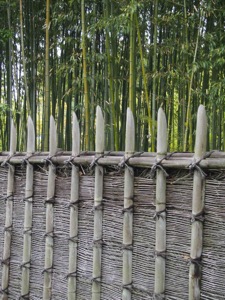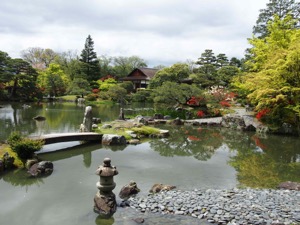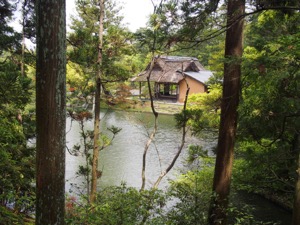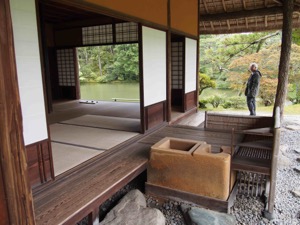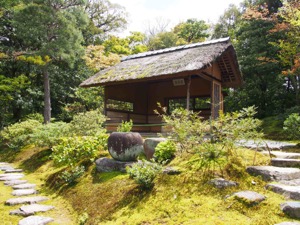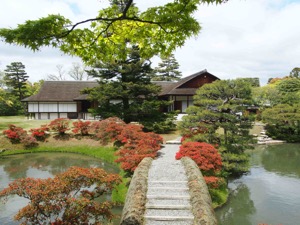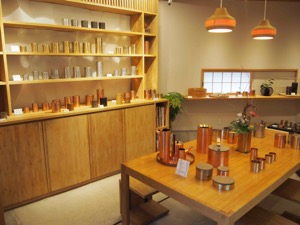Visit of Katsura Rikyu and tea pottery
Today a dream became true. Since some years ago I have visited a photograph exhibition at the Japan Foundation in Cologne/Germany, I was dreaming of one day visiting Katsura Rikyu (Katsura Imperal Villa). As today we are coming closer to it, I am asking myself if I will get disappointed seeing the buildings in reality as the photographs of Japanese star photographers have been so wonderful. But already walking along the bamboo fence and reaching the entrance gate, I know that this is even getting better than in my dreams.
We are very lucky, right the moment we enter the famous garden the sun comes out and here and than sends a little light on the million details of the garden and constructions. Katsura Rikyu was completed 1615 as a tasteful and simple summer residence for Prince Toshihito. It is the emblematic building of the tea style architecture (Shoin), which just uses natural materials of the surrounding environment. The very simple but at the same time very effective architecture inspired our day star architects like Mies van der Rohe and became the basis of the minimalistic architecture.
At Katsura Rikyu three villas and numerous tea houses in different styles are arranged in a beautiful garden, which stretches around a lake. It was taken a lot of care, with every step you have a new sight on the buildings and the garden is opening up. Through the garden leads a path with big rocks, someone has to walk carefully with the intention to concentrate on the way to the teahouse. The biggest and most important teahouse Shokintei has a very small entrance, visitors must hunch over to pass through the interior. This is very common in traditional teahouses, because in old times samurai that way were forced to leave there sword outside. Until today the gesture of passing the small entrance on the knees has the intention to show, that every visitor is equal.
The next teahouse is Shokatei, a mountain teahouse, build on the highest point of elevation of the garden with a view to the Kyoto surrounding mountains.
Than comes Shoiken, a country-style-teahouse and finally Gepparo, which is build above the shore of the pond. It’s intention is to watch the full moon light reflecting on the water. Almost drunk of the beautiful garden and the stunning architectonical details, we walk out the Katsura Rikyu. The whole day I will have backflashs of what I have seen in the morning.
Later we walk into some potteries close to Shichijo Station and finally we find one which really has very special ceramics from father and son. After buying some nice pieces, they offer us a very delicious Sencha. When we ask to see the leaves, he shows us a copper tin box, which is beautifully aged with a measuring spoon also made out of copper. Asking where to get those, he indicates us the way. Later we arrive at the Kaikado shop, where the different tins, aged for different periods are beautifully arranged. The older they get, the more beautiful they are. This is the secret of japans estetics. Another secret of Kaikado is, that if there is something wrong with the tin, they fix it for free, the whole lifespan of the tin… you have to consider, that Kaikado exists since 1875 and many tines within families are handed over for decades. It does so good to see how handcraft is taken serious in Japan until today.
 Português
Português English
English Español
Español